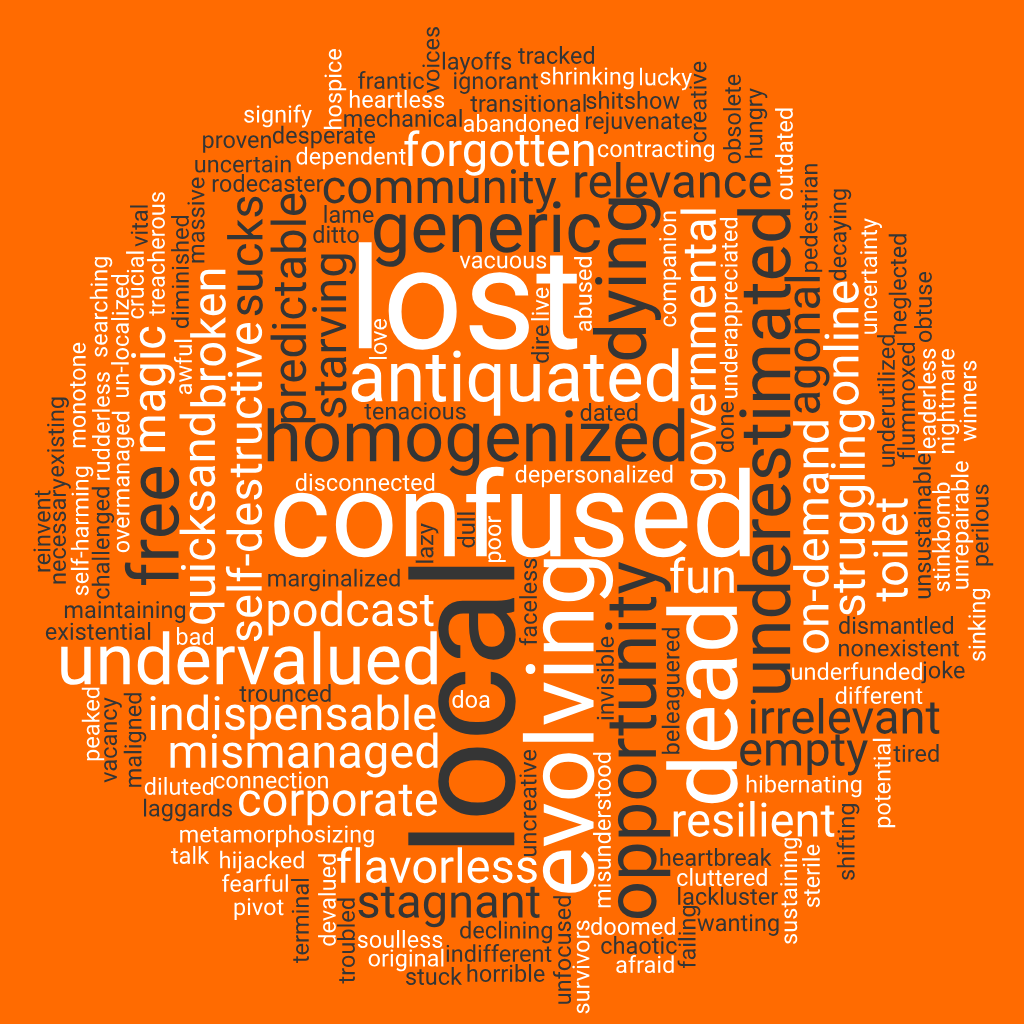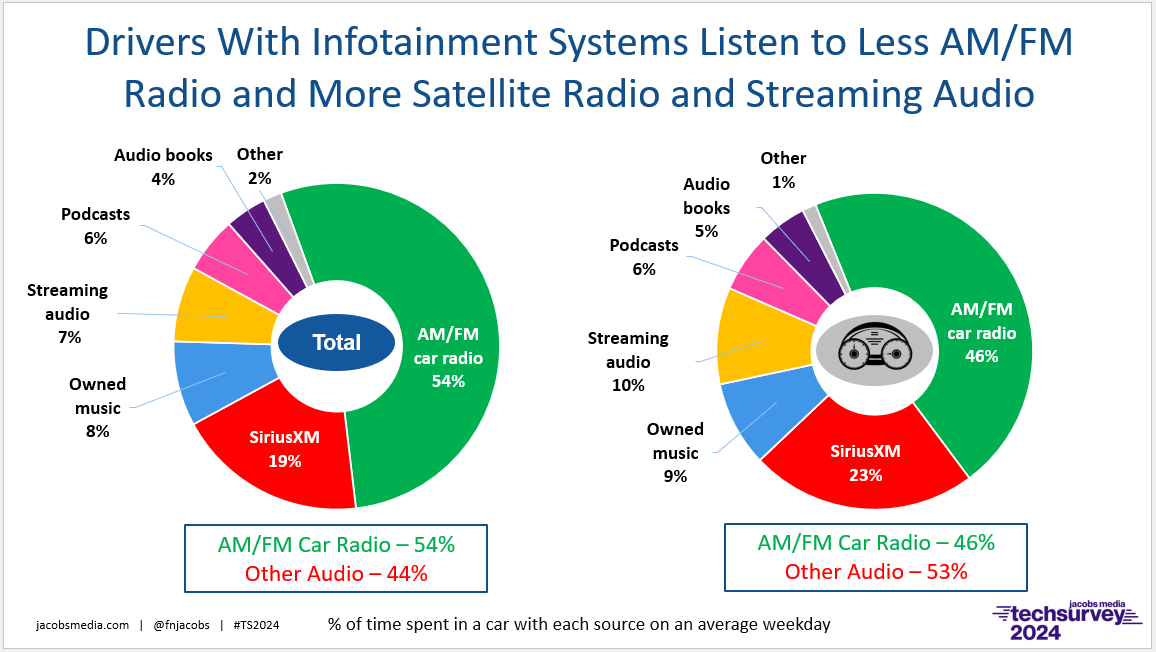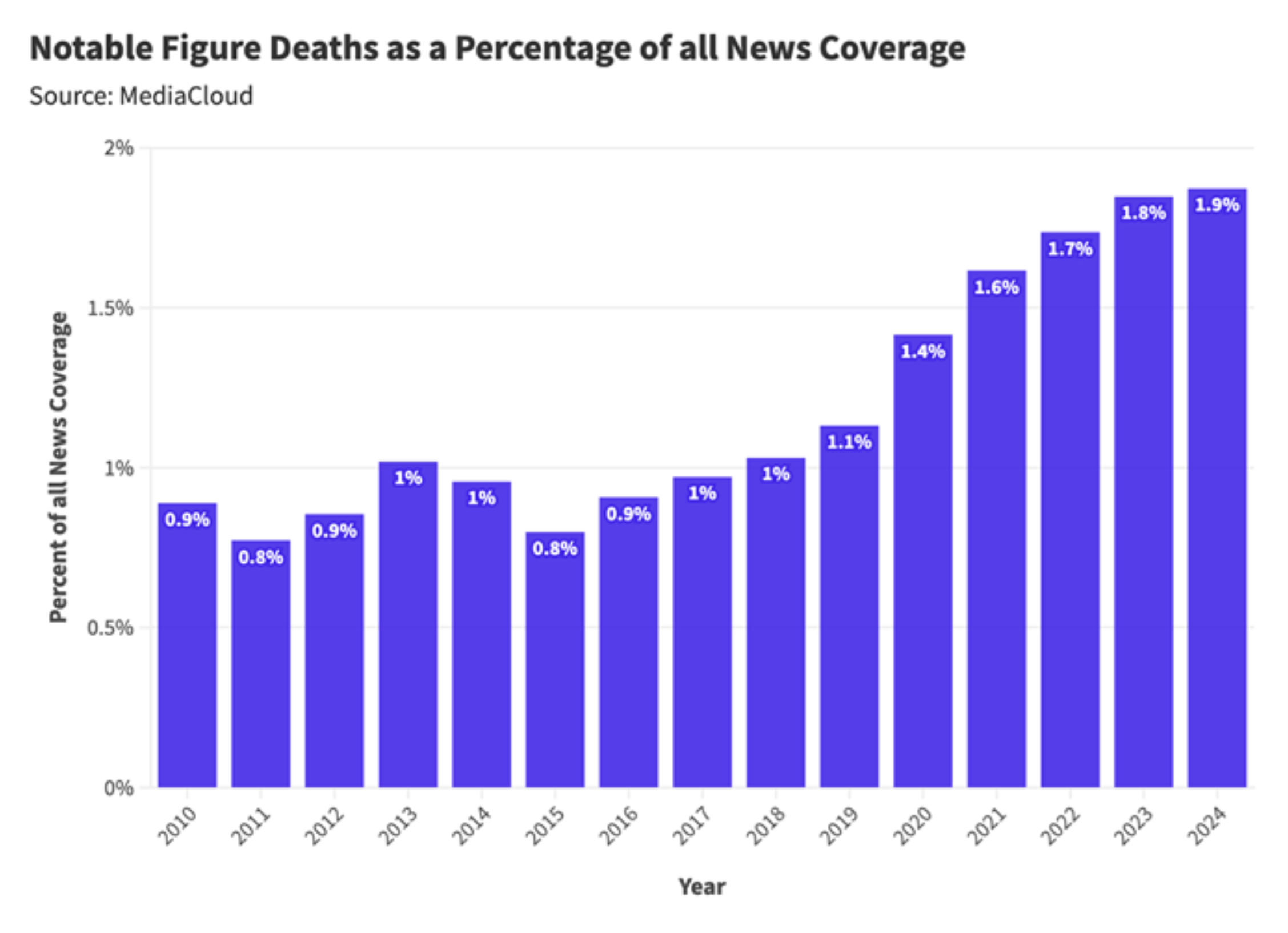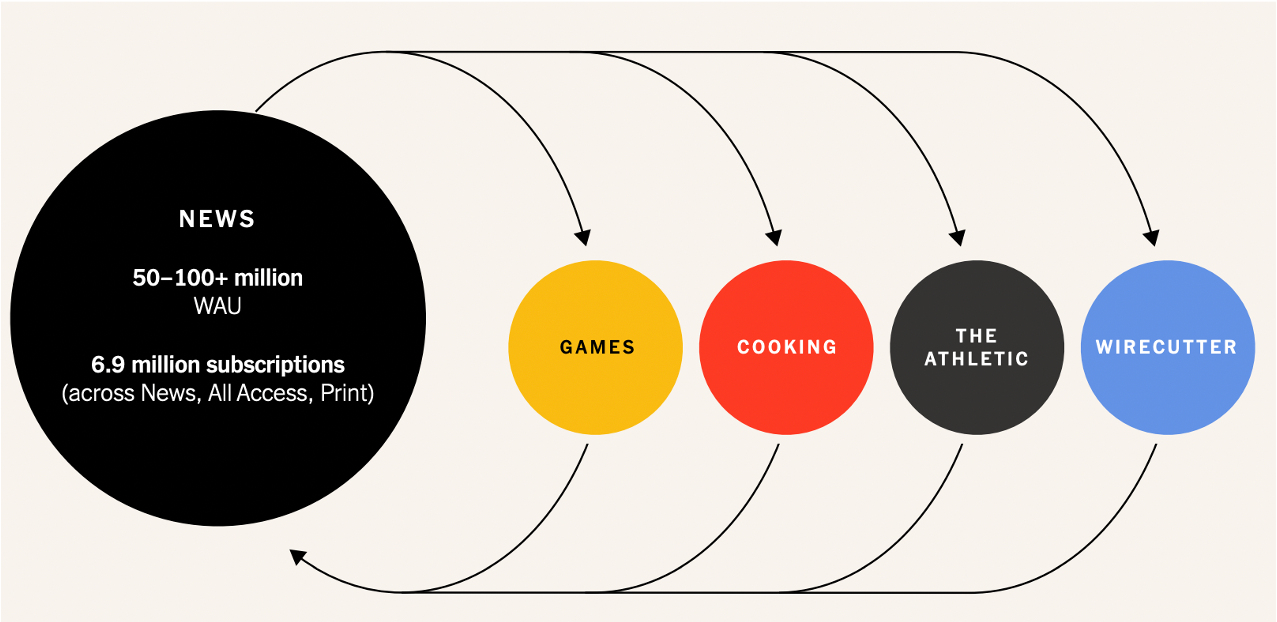
Eight weeks into the new year and it’s off to a precarious start. Punctuated by Trump 2.0, change from top to bottom in the U.S. is cascading through the entire country – and the world.
We’re already beginning to feel the effects in radio – a new FCC, the revival of the AM For Every Vehicle Act, and upcoming hearings featuring the CEOs of PBS and NPR defending why they continue to need government funding.
In a blog post last month where you came up with one word that best describes 2025 for radio, your choices were both interesting and all over the map. We created a word cloud to show the diversity of your responses.

Fellow blogger Dick Taylor nailed it with “uncertain” (it appears in the upper left hand corner of the word cloud), and wrote his post Sunday around that very same theme.
And speaking of numbers, today is only the 49th day of the year. That means the earth has traveled just 13% of its way around the sun and we’re already experiencing some mind-numbing numbers that underscore the uncertainty Dick predicted. Like these:
3.4 million
It’s always smart to start big, but this mega-number is a double-edge sword for broadcast radio. According to The Media Audit’s Fall 2024 survey, it’s the number of new vehicles New Yorkers will buy this year. It’s no wonder they’re touting it. The story ran in Radio Ink last month.
But as our Techsurveys have warned over the past several years, new vehicles are almost all equipped with “infotainment systems.” And once consumers get behind the wheel of these well connected cars (and trucks), the less broadcast radio they listen to.
The chart below from our 2024 Techsurvey (this year’s study came out of the field last week), shows how all drivers and passengers consume in-car audio (the pie chart on the left) vs. how those who drive vehicles with fully equipped dashboards (on the right) do.

So, this number trumpeting new car sales in New York cuts both ways.
1.9%
From a big number to a small percentage, a new analysis from FOJM, Daniel Parris, reveals the demise of more famous people in recent years. Specifically, it’s the percentage of news coverage devoted to celebrity deaths in 2024 – which is at an all-time high.

Daniel’s recent edition of his always brilliant and insightful “Stat Significant” raises several funereal questions around this notion. Are there simply more celebrities now, thanks to the rise of TV, film and sports (yes)? And is the population of the world bigger than ever (also yes)?
But of course, it goes beyond that, as Daniel points out. Celebrity fandom via social media has enabled massive communities of enthusiastic followers. Reddit is a great example where fan-driven “subreddits” about celebrities like Taylor Swift and Elon Musk number in the millions. The power of all these online acolytes fueling the celebrity fire has helped grow the category. Pity the media outlet or brand that has no familiar, compelling talent (or influencers) in a world driven by famous people.
Enjoy this story on “Stat Significant,” another great bit of storytelling by the numbers.
45%

That’s the percentage of Baby Boomers who agree with the statement, “I want to enjoy my money for myself while I am still alive” rather than bequeath it to their kids. That’s according to a Schwab study reported in Money.
We know Baby Boomers are not just the wealthiest generation of all time, but they may be the most selfish. The fact nearly half want to hold onto their moolah says it all. Consider only 11% of Gen Xers and 15% of Millennials responded similarly (although maybe we need to give them time).
For radio, this is yet another study that could fill the average hard drive with stories and data about the incredible spending power of Boomers. It’s the generation radio broadcasters own – but can’t sell. How sad.
Years from now when we look back at “What happened to radio?,” I believe the biggest smoking gun (and there will be an entire arsenal) will be the industry’s inability to monetize its natural demographic strength.
32%
It turns out this is a big number. It’s the percentage of New York Times subscribers who don’t pay for the company’s traditional news product.
It’s at an all-time high as more and more subscribers have signed up for the Times’ verticals – Cooking, Games, Wirecutter, The Athletic, and Audio. This growing group now represents 3.5 million subscribers who aren’t interested in paying for its news content but are shelling out money every month for these other content portals.
If you’ve sat in on any of Jacobs Media’s webinars and presentations over the past few years, chances are you’ve seen the chart below, illustrating how the Times has expanded its revenue and audience size, but also its digital footprint. It’s a fascinating business model and it’s working. Of course, it is predicated on creating great content in these other areas of interest.

The story was covered in detail by the UK’s Press Gazette earlier this month. The Times saw increases in subscription revenue, total revenue, and profit. And notably, the company’s investment in sports via The Athletic enjoyed its first quarter in the black last year. This is especially important because “The Old Gray Lady” never stood out for sports, but now has a foothold with that rocket-fueled audience.
187.8 billion
That’s how many dollars Amazon raked in last quarter, allowing the company to leapfrog Walmart for the very first time. It’s an impressive milestone, no matter the metric.
In related news, Amazon workers in North Carolina voted against unionizing by a resounding 75:25 margin, another strong sign for the e-commerce giant.

The first Amazon business to unionize took place last month, at a Whole Foods in Philadelphia.
We will definitely see other mind-boggling numbers that help shape the narratives of our professional and personal lives before 2025 is over. Jacobs Media hopes to be the source of some of that data when our 21st Techsurvey is released in just a few weeks.
For this new 2025 study, 500 commercial stations across the U.S. and Canada contributed 25,000 responses. It’s a great-looking survey, and I’m excited to present it to you. Stay tuned for the details.
- It’s The Christian (Radio) Thing To Do - June 3, 2025
- Is It Time For Radio to WAKE UP?! - June 1, 2025
- For Radio, The Perils Of Rebranding - May 30, 2025




Two things stood out to me in today’s blog, Fred:
1) While the radio industry continues to fight to maintain a past glory in the car (AM Radio), consumers who purchase new vehicles [that] are almost all equipped with “infotainment systems,” [consume] less broadcast radio.
2) Media that is growing has done it with “celebrity power.” As you so correctly stated in your article: “Pity the media outlet or brand that has no familiar, compelling talent (or influencers) in a world driven by famous people.” Sadly, the downsizing of talent in the radio industry, has also negatively impacted its power to attract new audiences and grow.
Looking forward to TechSurvey 2025.